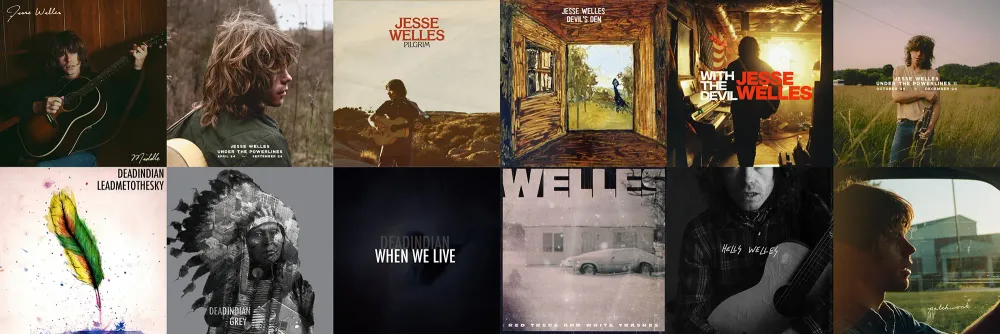The Wellespring Project: Mapping Creativity, Connection, and Meaning
Next week, I begin teaching my Introduction to the Digital Humanities course for the first time in two years. Each time I teach it, I adapt it, but a lot has changed since our last run. The explosion of generative AI (from ChatGPT and Anthropic's Claude to Google's Gemini and Notebook LM, along with image and video tools like Midjourney and Stable Diffusion) is—for better or worse—one major transformation. Another is my own growing use of graph databases for archaeological research in Jordan, something that has reshaped my digital thinking during my recent sabbatical.
So this semester's course has been completely reimagined. Students will critically and creatively engage AI tools, learn to build and query knowledge graphs in Neo4j, and visualize connections across complex datasets. To focus this work, we'll center it on a new digital humanities experiment I've dubbed the Wellespring Project.
Inspiration: Jesse Welles and the Wellspring of Ideas
The Wellespring Project draws its name from both the singer-songwriter Jesse Welles—whose work inspires our inquiry—and from the image of a wellspring: a flowing source of creativity, connection, and meaning.
Since his breakout social-media folk protest songs in 2024, Welles has earned a reputation for "singing the news" and for being one of the most prolific and thoughtful songwriters of his generation. He's also gained at least one ardent academic admirer (i.e., yours truly).
Yet, critics abound, taking issue with Jesse's politics, voice, songwriting process, or musical range (which I find rather mind-boggling). These debates make him an ideal subject for a digital-humanities exploration of how art is created, circulated, and contested in our interconnected world.
Mapping Creativity and Connection
At its heart, Wellespring is a digital humanities laboratory exploring how art emerges from networks of people, places, and ideas—and how audiences interpret it through their own experiences and values.
Using tools such as Neo4j, graph visualization, and AI-assisted text analysis (combining traditional natural language processing with large-language-model approaches), we'll map the creative world surrounding Welles' music: how lyrics convey emotion and sentiment; reference landscapes, memories, and current events; how collaborations form; and how recurring motifs—roads, rivers, light, distance, space—reappear over time.
We’ll also analyze both the acclaim and the criticism Welles receives, seeing how patterns of reception and resistance can be visualized within broader cultural networks.

A Flowing Model of Meaning
Like water rising through porous ground, our data model traces hidden channels linking songs to the wider currents of culture. Each node and relationship represents a drop of insight; together they form a flowing, ever-expanding source of interpretation.
A Collaborative Classroom and Research Platform
The Wellespring Project is both a research endeavor and a teaching collaboration. Students will learn to think with data, code, and story, contributing analyses, visualizations, and reflections that keep the project alive and evolving. Faculty and collaborators will use the graph as a platform for deeper questions about authorship, creativity, and digital ethics.
Ultimately, Wellespring aims to show how digital methods can deepen—rather than replace—humanistic understanding: reminding us that behind every dataset lies a human voice, and behind every connection, a creative spark.
Looking Ahead
The project will begin in the classroom and will soon flow outward through Wellespring.com, where researchers, students, and the public alike can draw from the same source and add their own streams of insight to this shared well of discovery.
The site will document our database, workflow, and interpretive process, offering reflections on Jesse Welles as a contemporary cultural phenomenon and on how our digital tools might illuminate creativity in any domain.
I’m eager to build this with my students, and to share what we find as the spring begins to flow.



